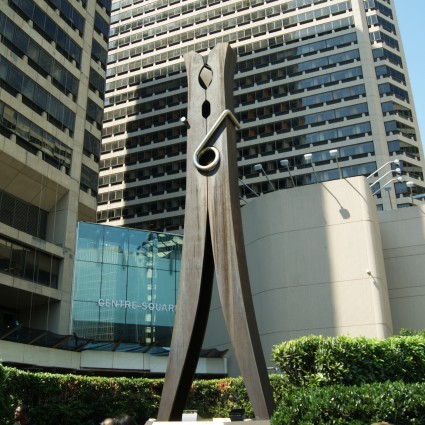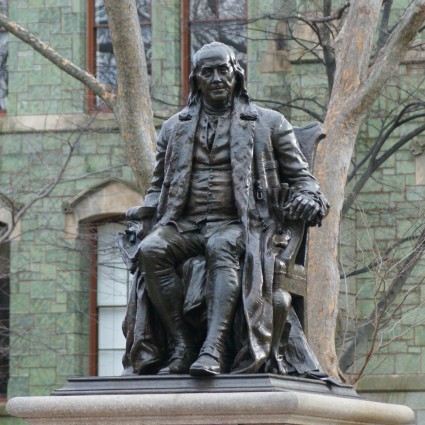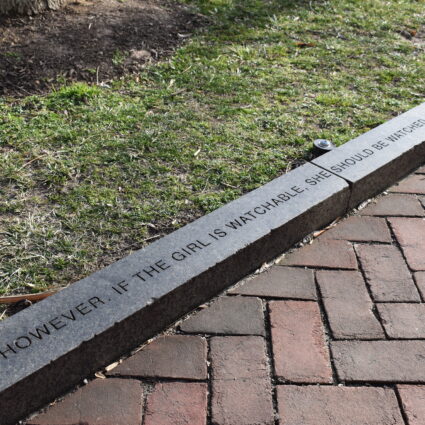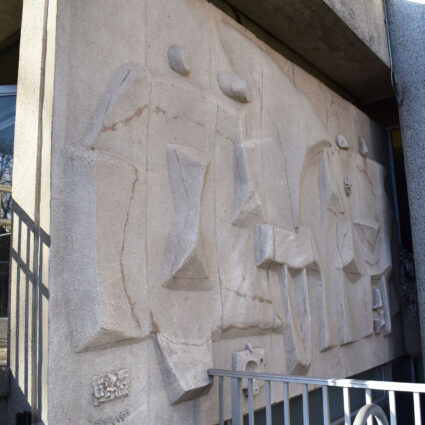At A Glance
Commissioned by the University of Pennsylvania as part of the Redevelopment Authority’s 1% program
Incorporates a visual joke: Oldenburg speculated that the nearby statue of Benjamin Franklin is missing a button
Oldenburg’s monuments generally cause controversy, and Split Button was no exception
Since commonplace, mass-produced objects dominate American life, Claes Oldenburg made them the subjects of monuments.
Oldenburg speculated that the nearby statue of a corpulent Benjamin Franklin is missing one button.
Oldenburg’s collaborator on the project was his wife, art historian Coosje van Bruggen, who had worked with him since 1976 on large-scale sculptures. Commissioned by the University of Pennsylvania in 1979 as part of the Redevelopment Authority’s Percent for Art program, Split Button was partially funded by a grant from the National Endowment for the Arts as well as donations from private sources.
Like his Clothespin at Centre Square, the Split Button, which is located on the plaza in front of Van Pelt Library, uses incongruity to snap the viewer to attention. It also incorporates a specific visual joke, for Oldenburg speculated that the nearby statue of a corpulent Benjamin Franklin is missing one button. At first the artists planned to create an unbroken button of a grayish-black color, set parallel to the ground to form a bench. But after the initial design was approved, Oldenburg and van Bruggen developed the concept further, giving the button both a fracture and a tilt and painting it entirely white. The sculpture was installed at its present site in 1981.
Oldenburg’s monuments generally cause controversy, and Split Button was no exception. Over the years, however, the Button has become a familiar part of the campus environment. Despite its tilt, students often sit on it. Children play on it and under it and poke their hands through the holes. The inventive Ben Franklin, were he consulted, might well approve this use of his missing button.
Adapted from Public Art in Philadelphia by Penny Balkin Bach (Temple University Press, Philadelphia, 1992).
RESOURCES
- WHYY: Claes Oldenburg, 93, created giant sculptures that became icons of Philly
- NPR: Claes Oldenburg, creator of Pop Art on a giant scale, has died at age 93
This artwork is part of the Around University City tour



